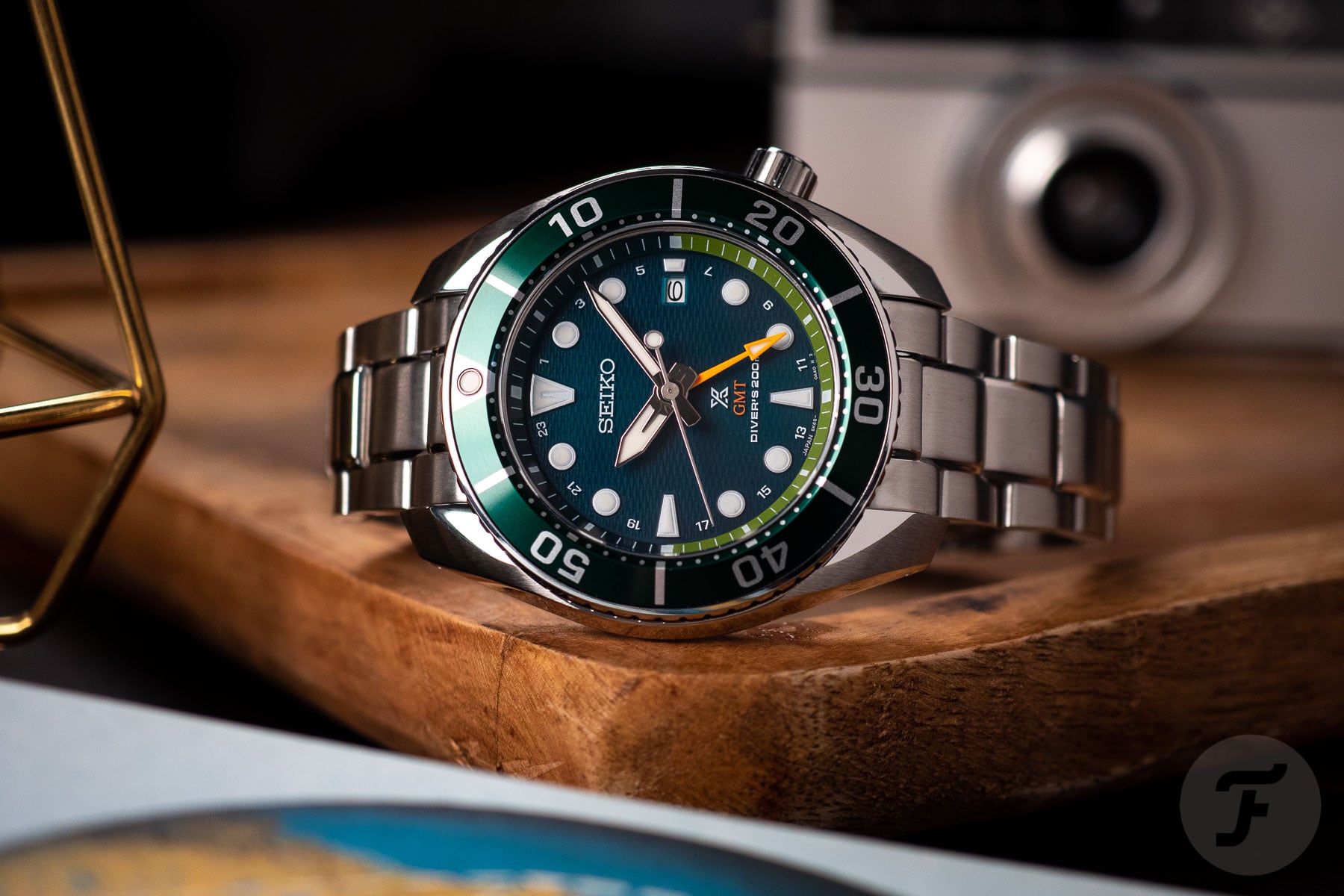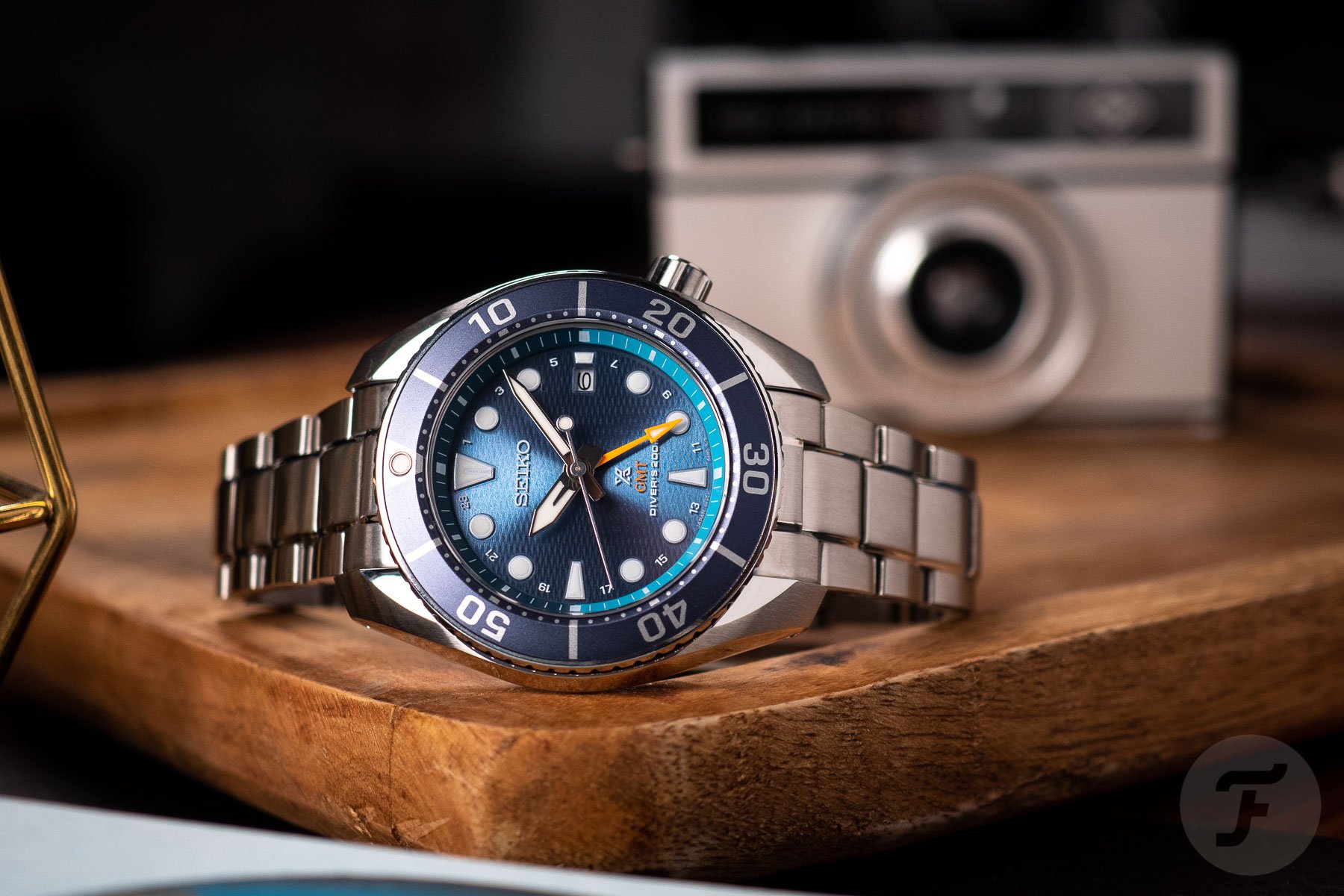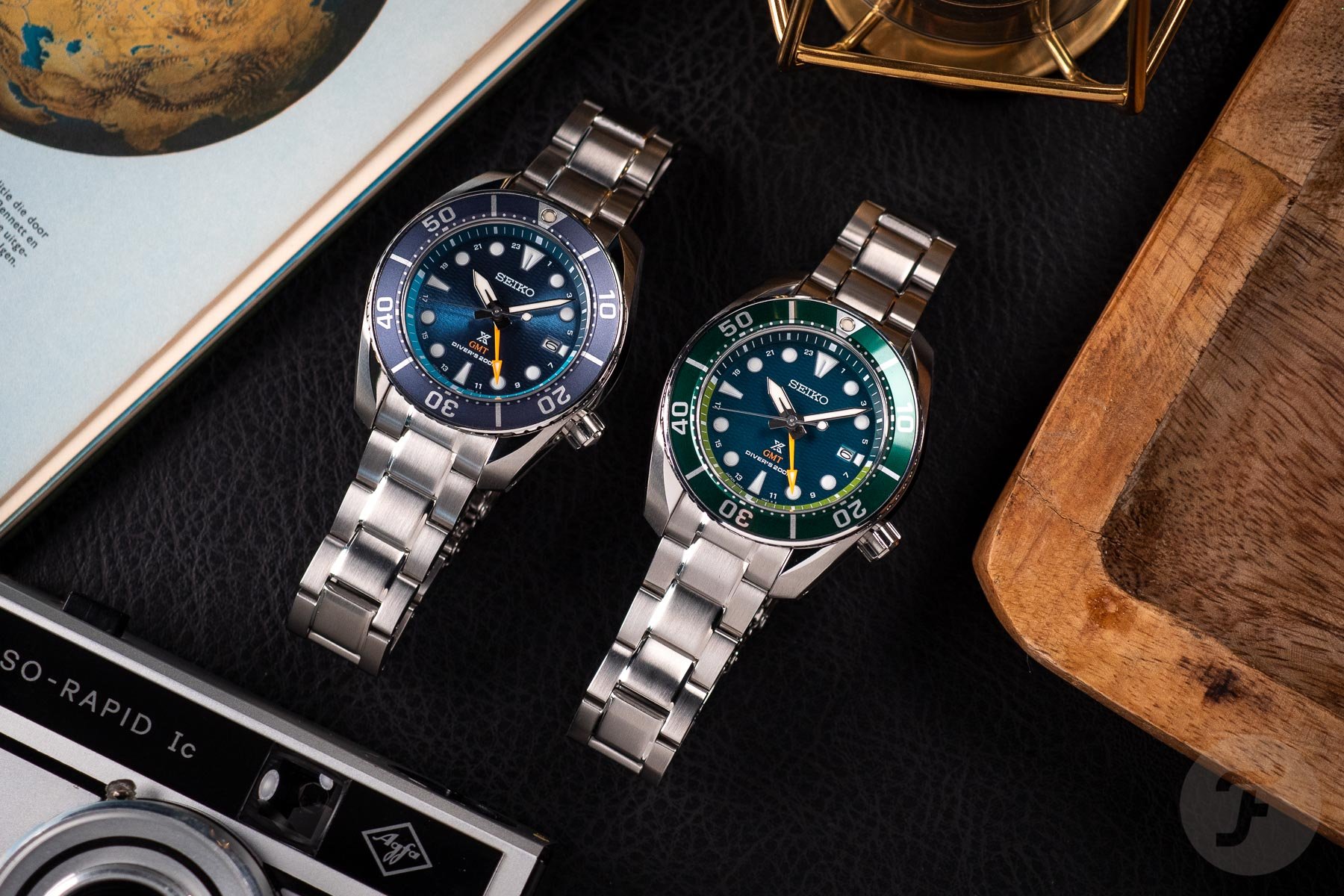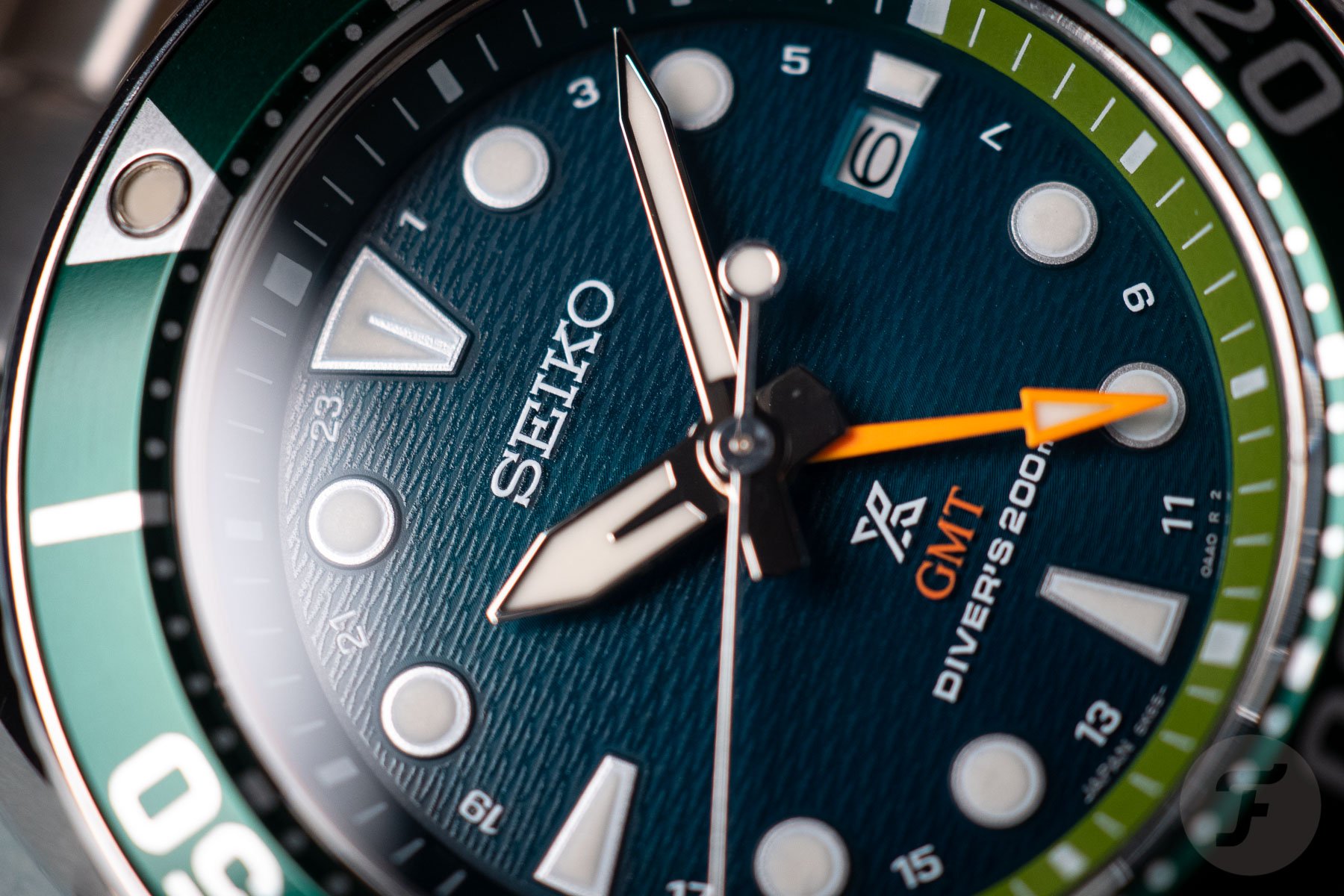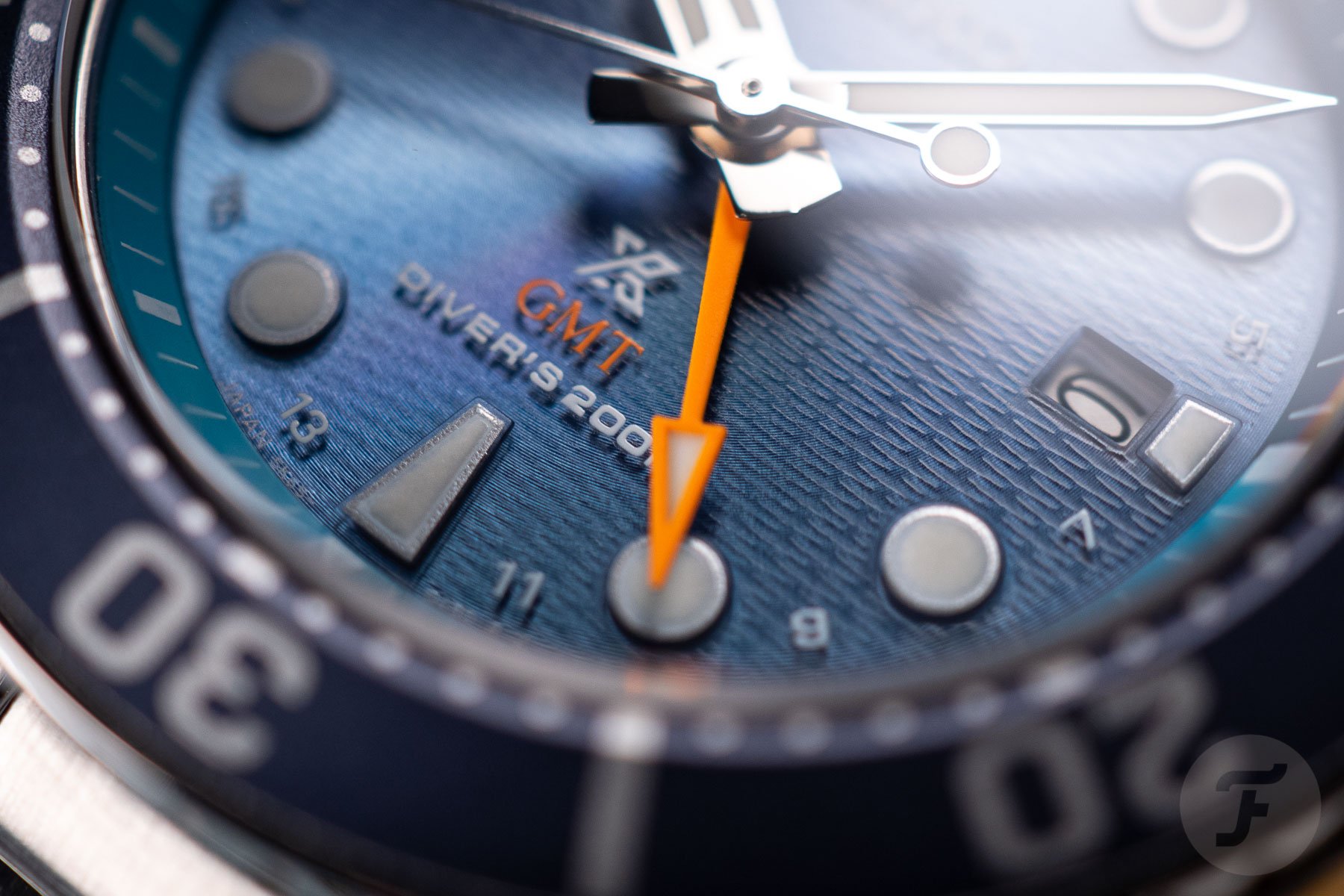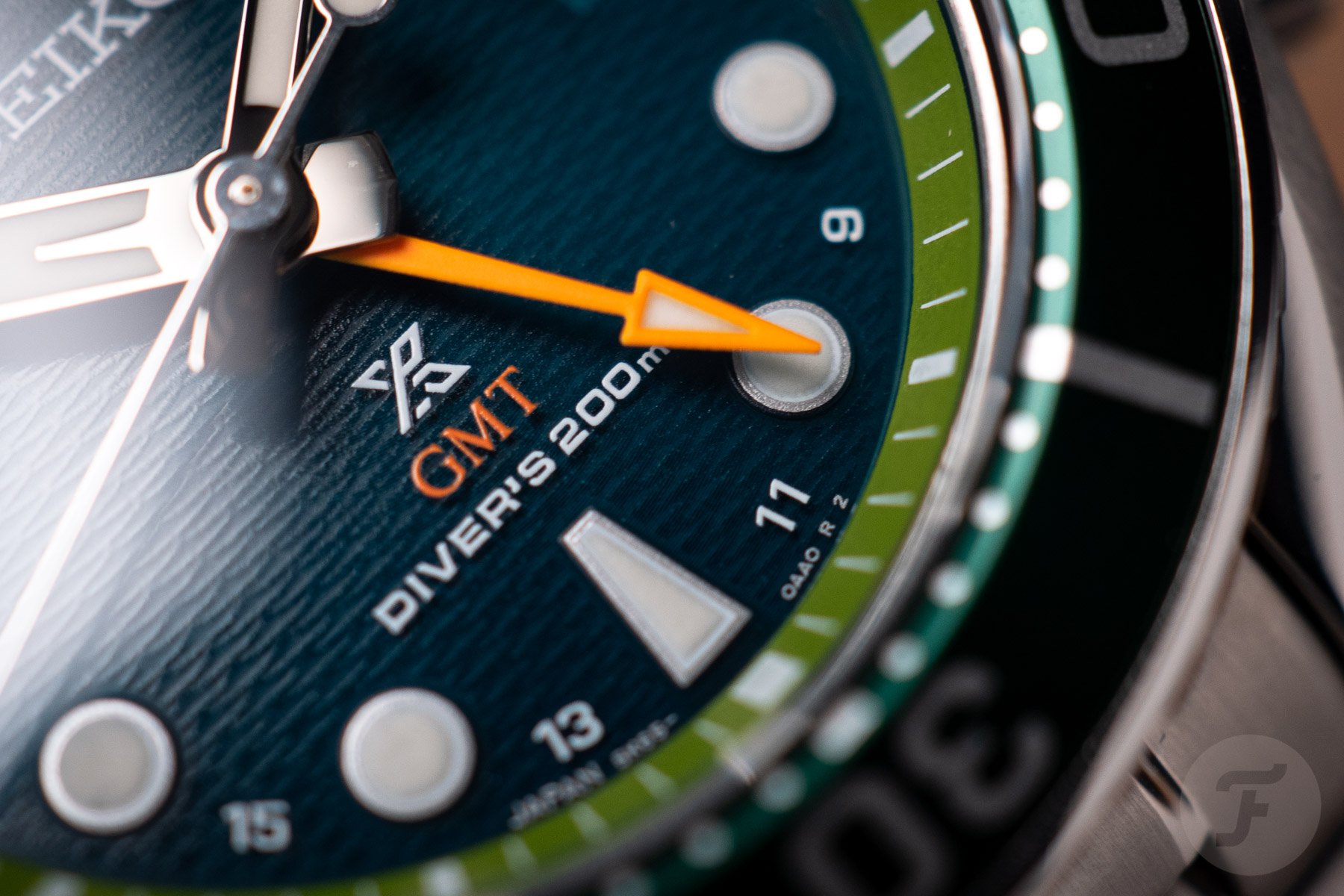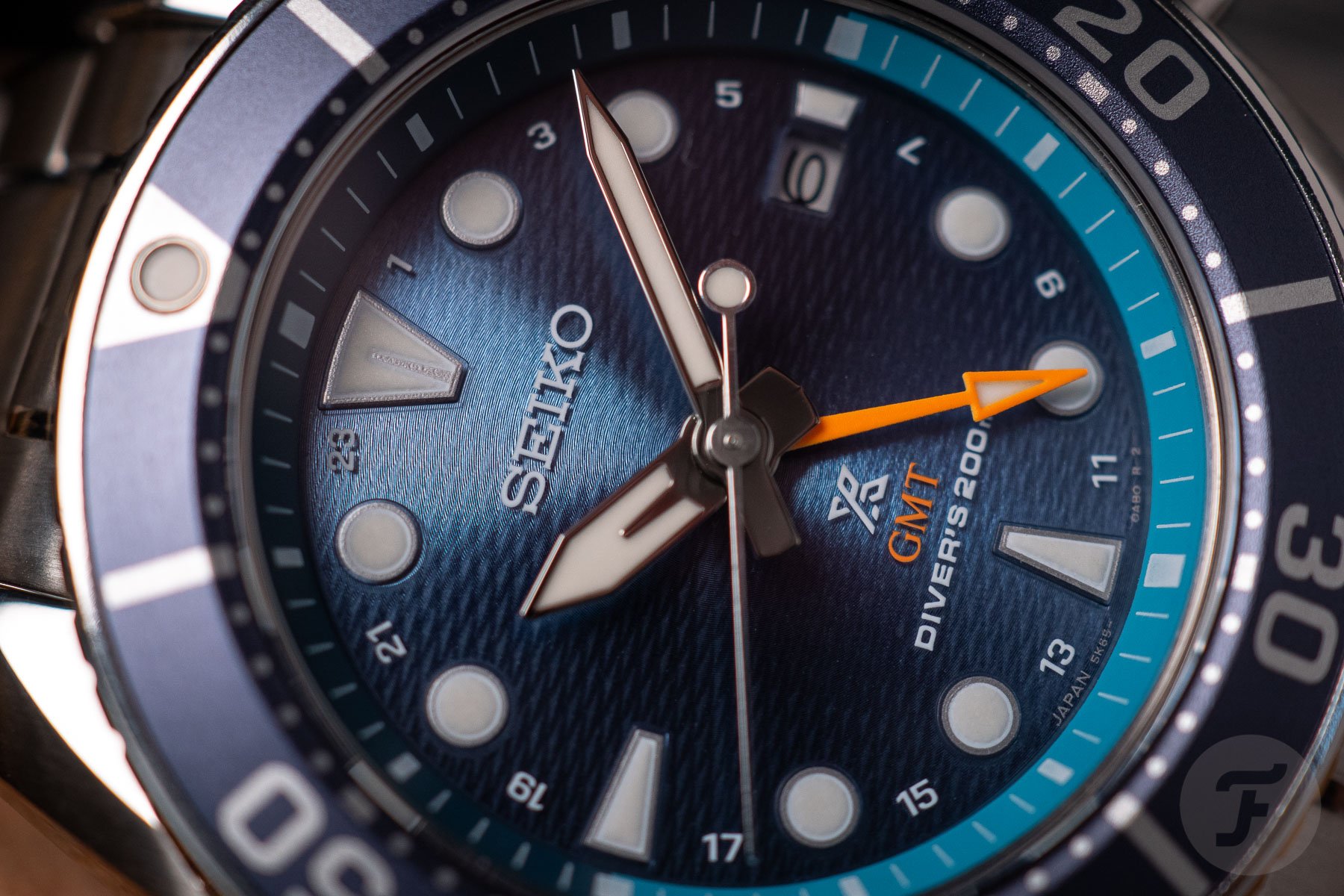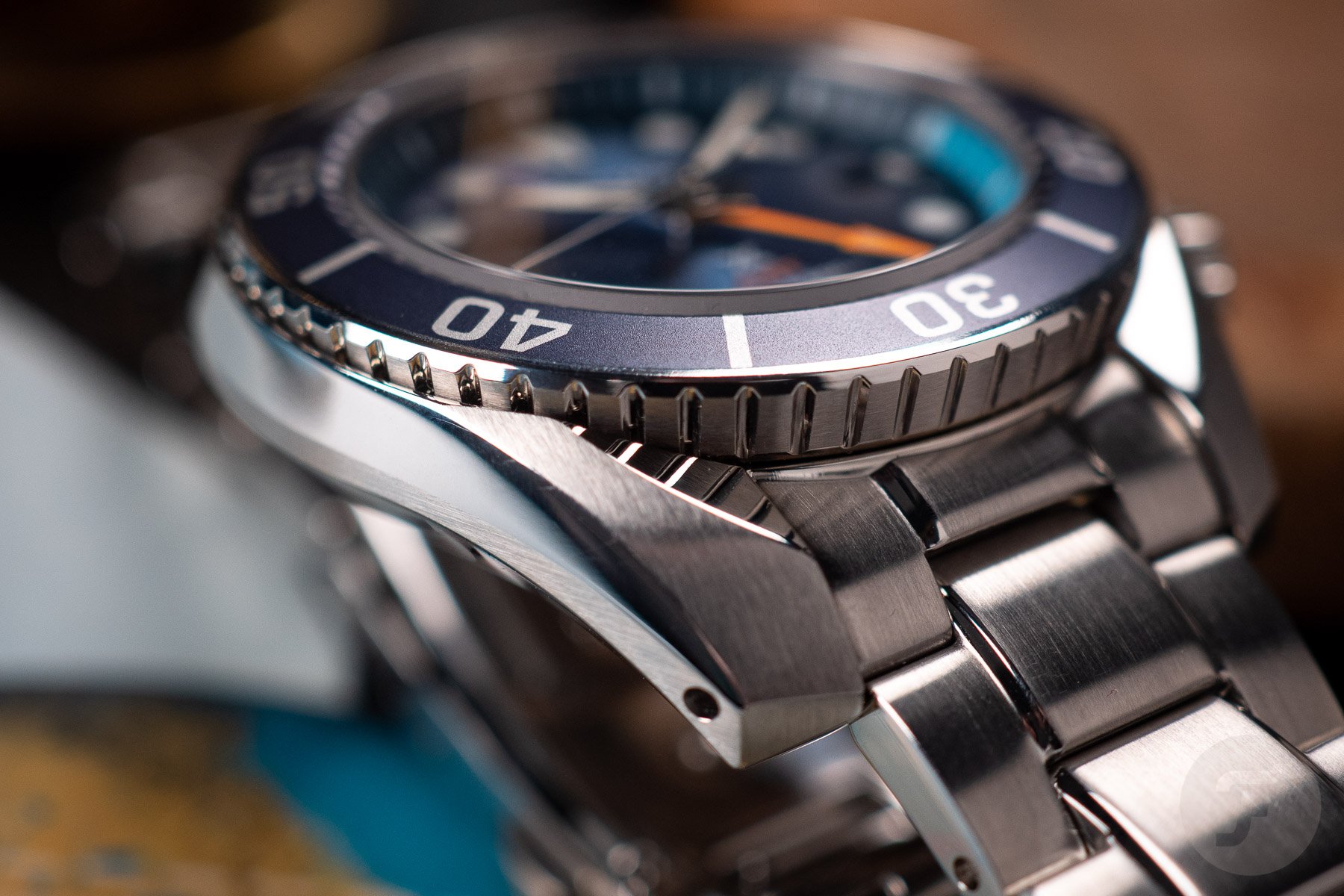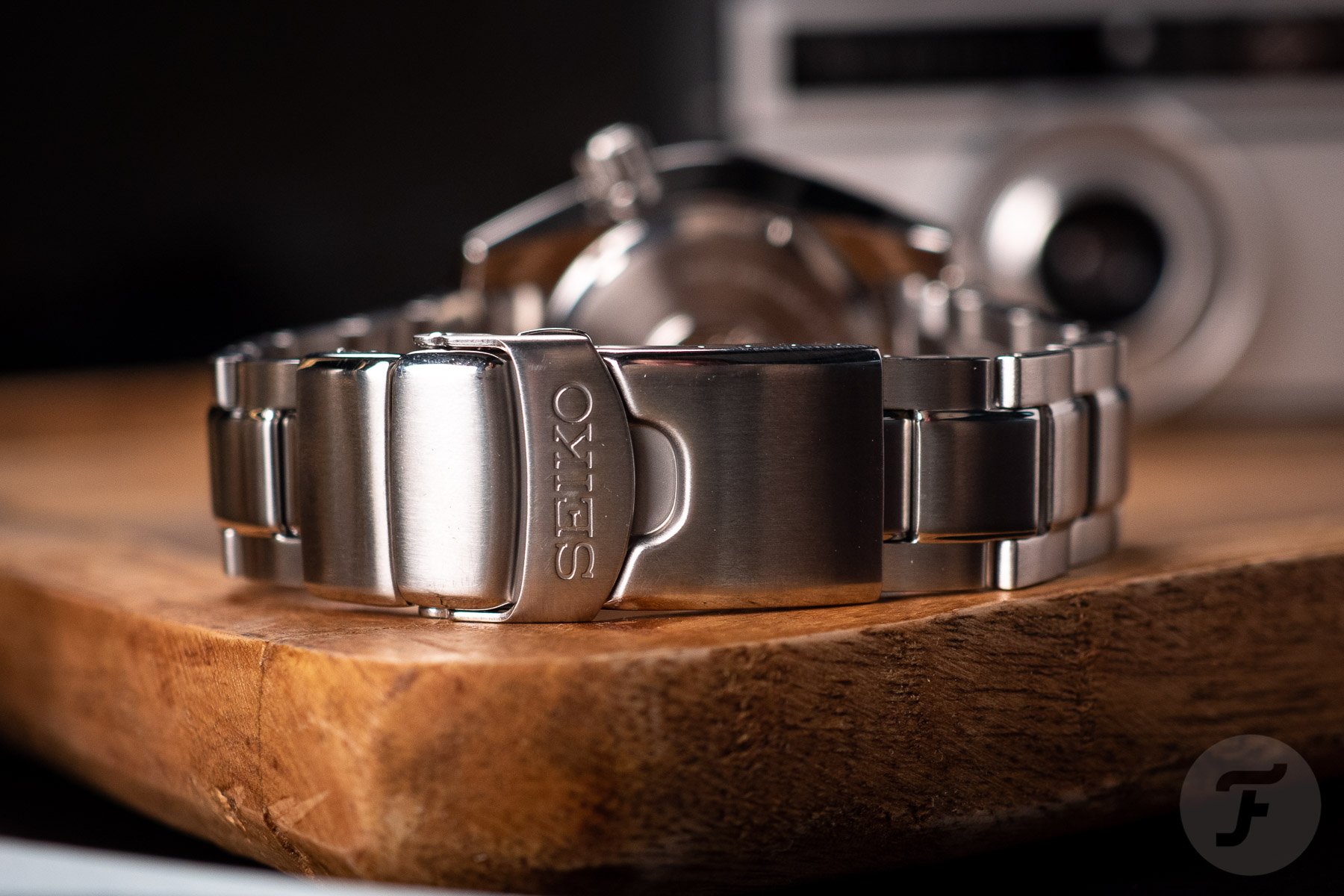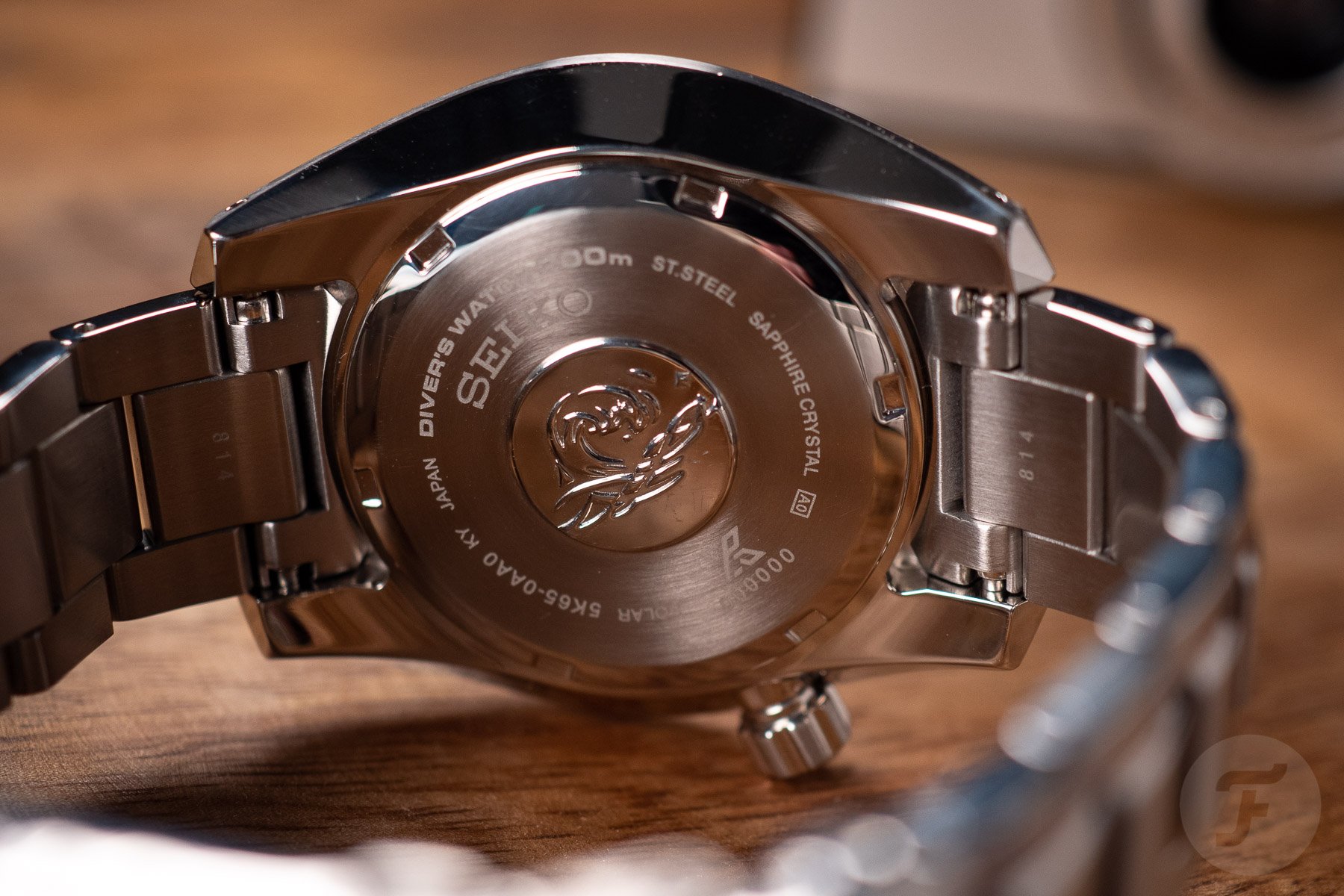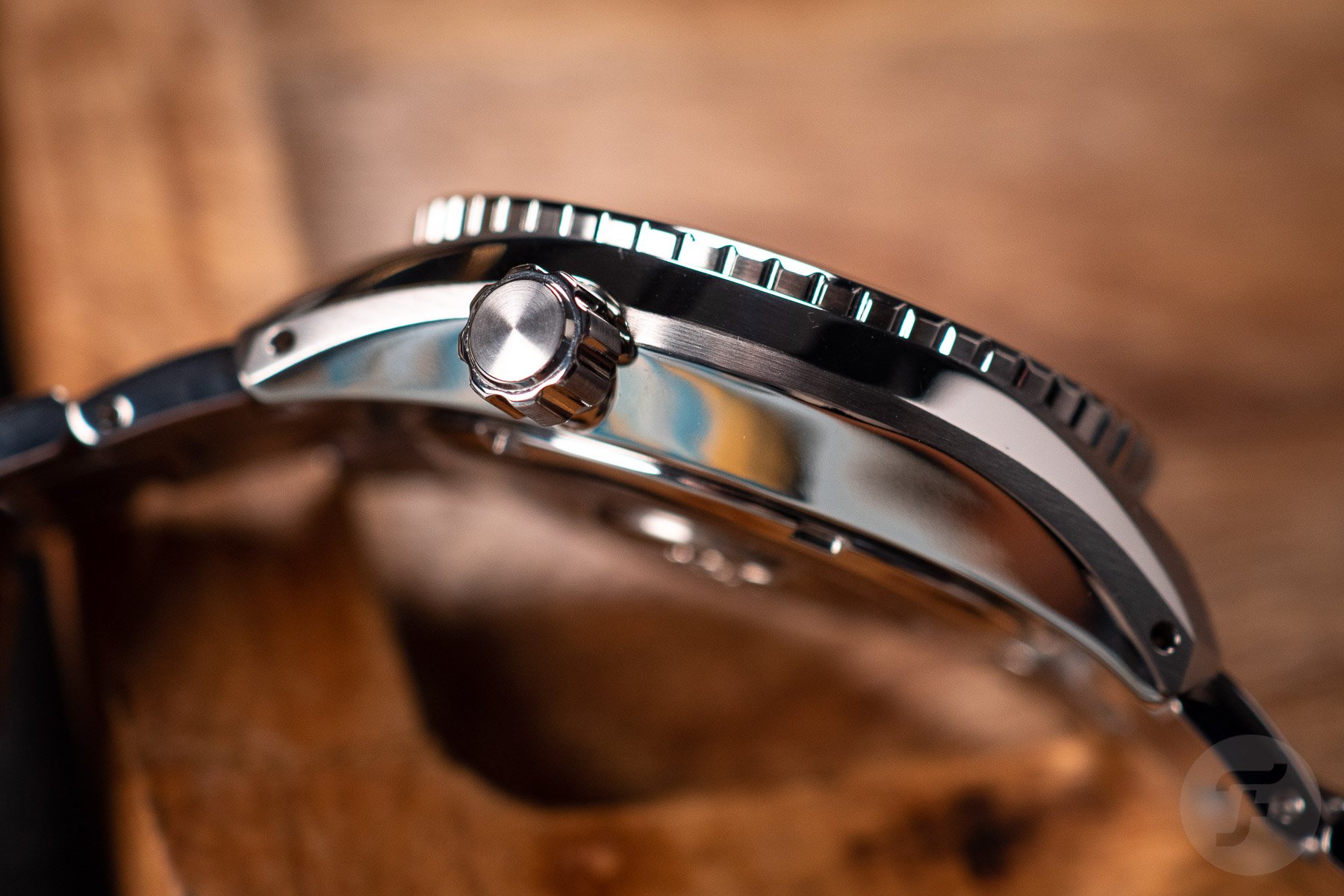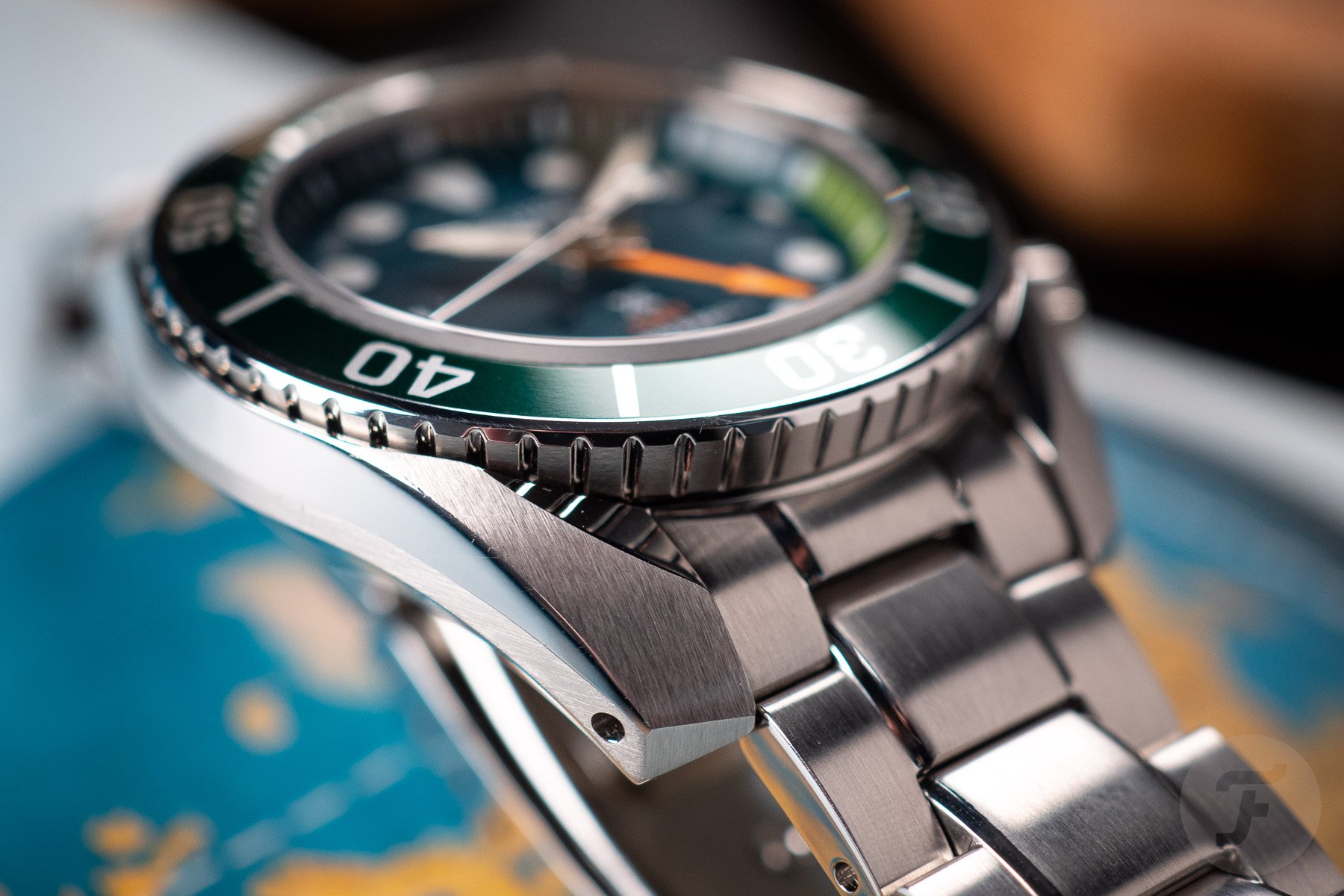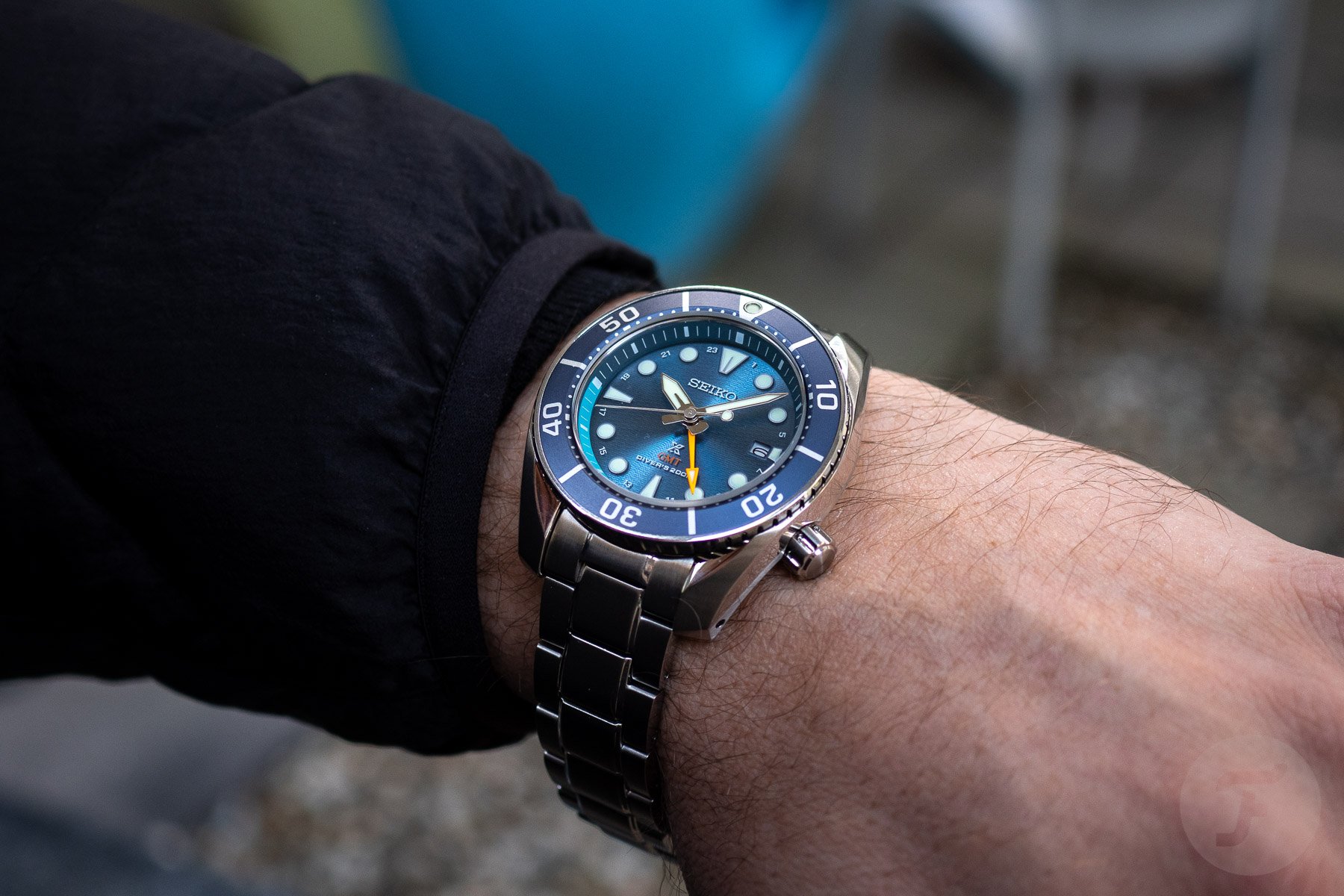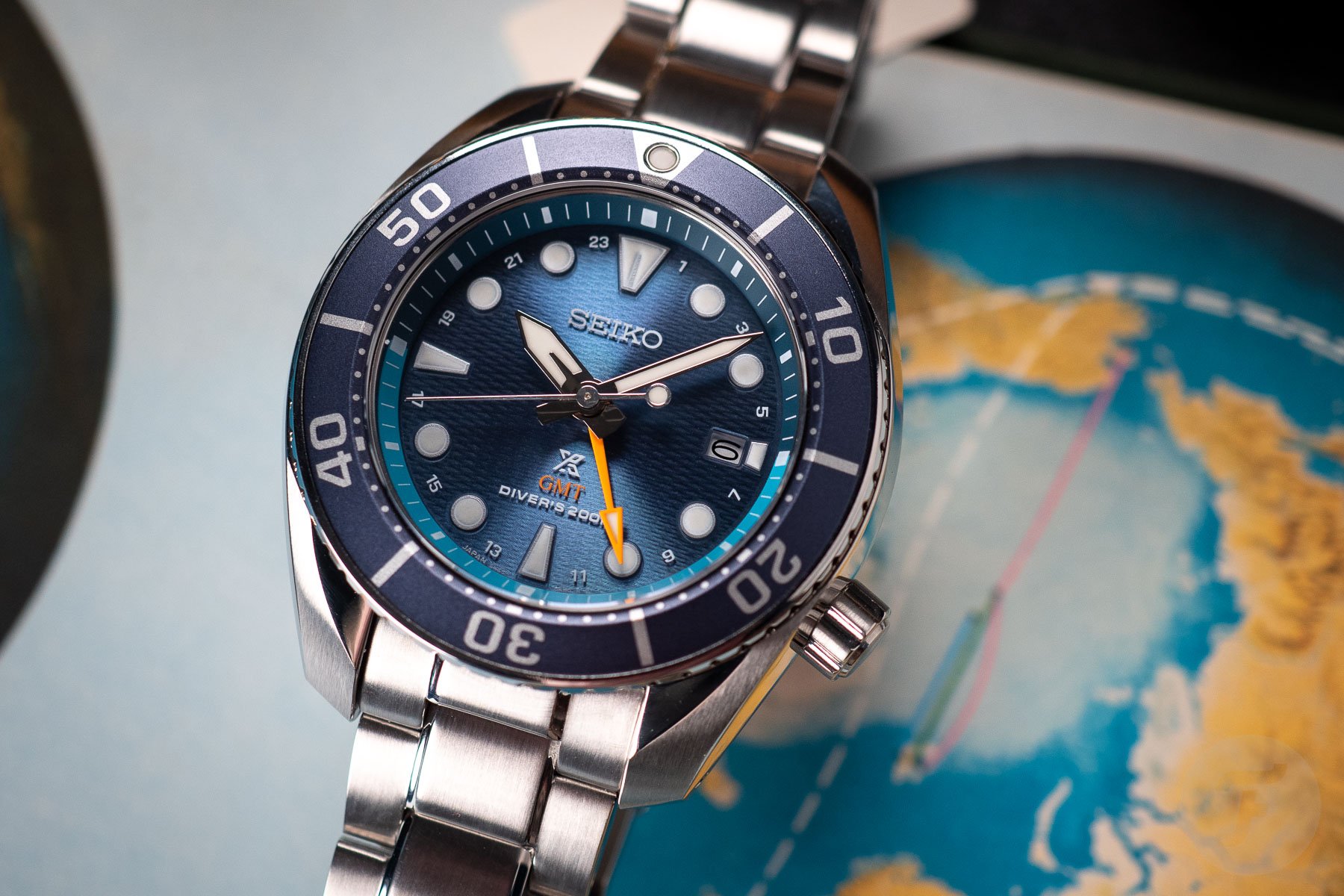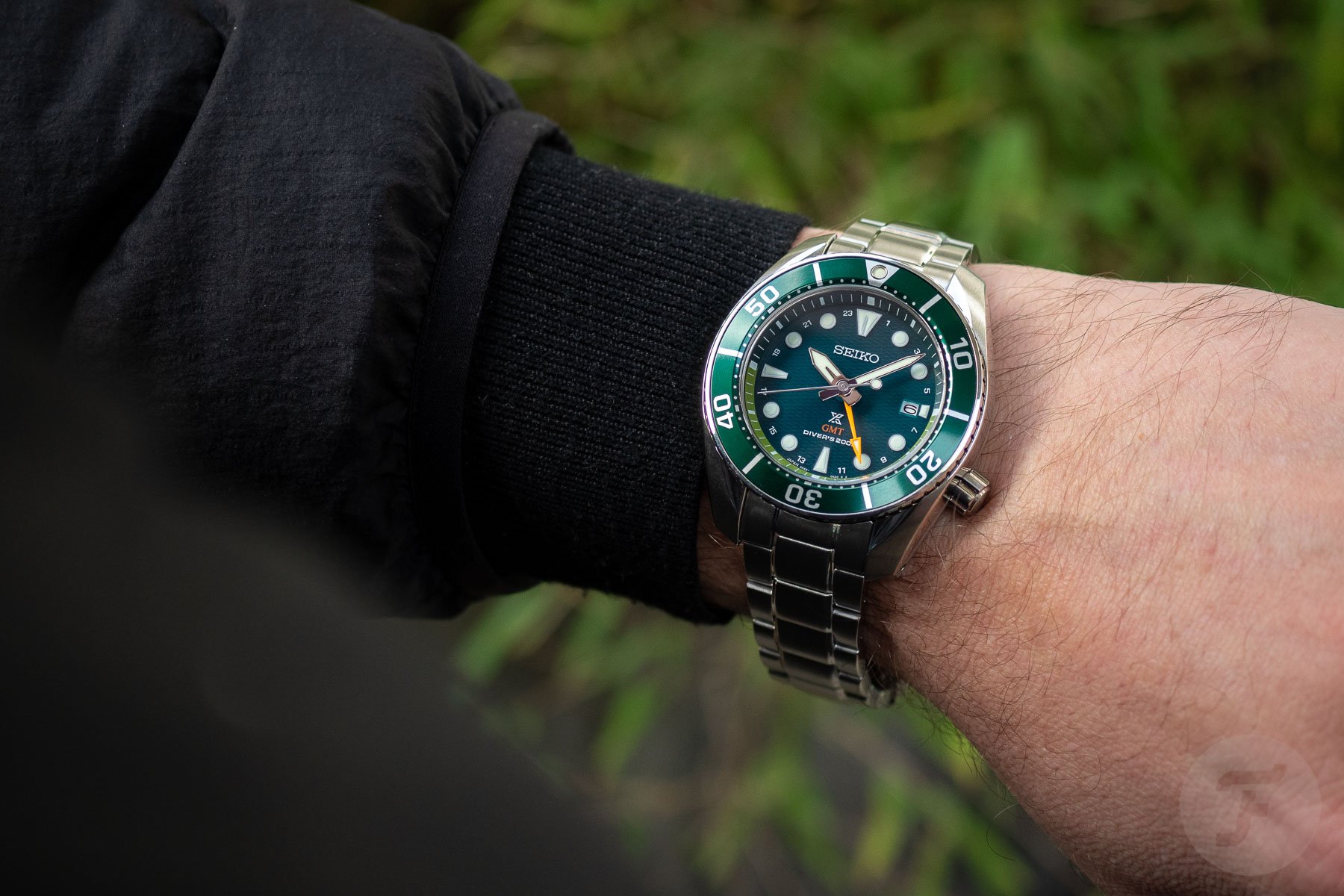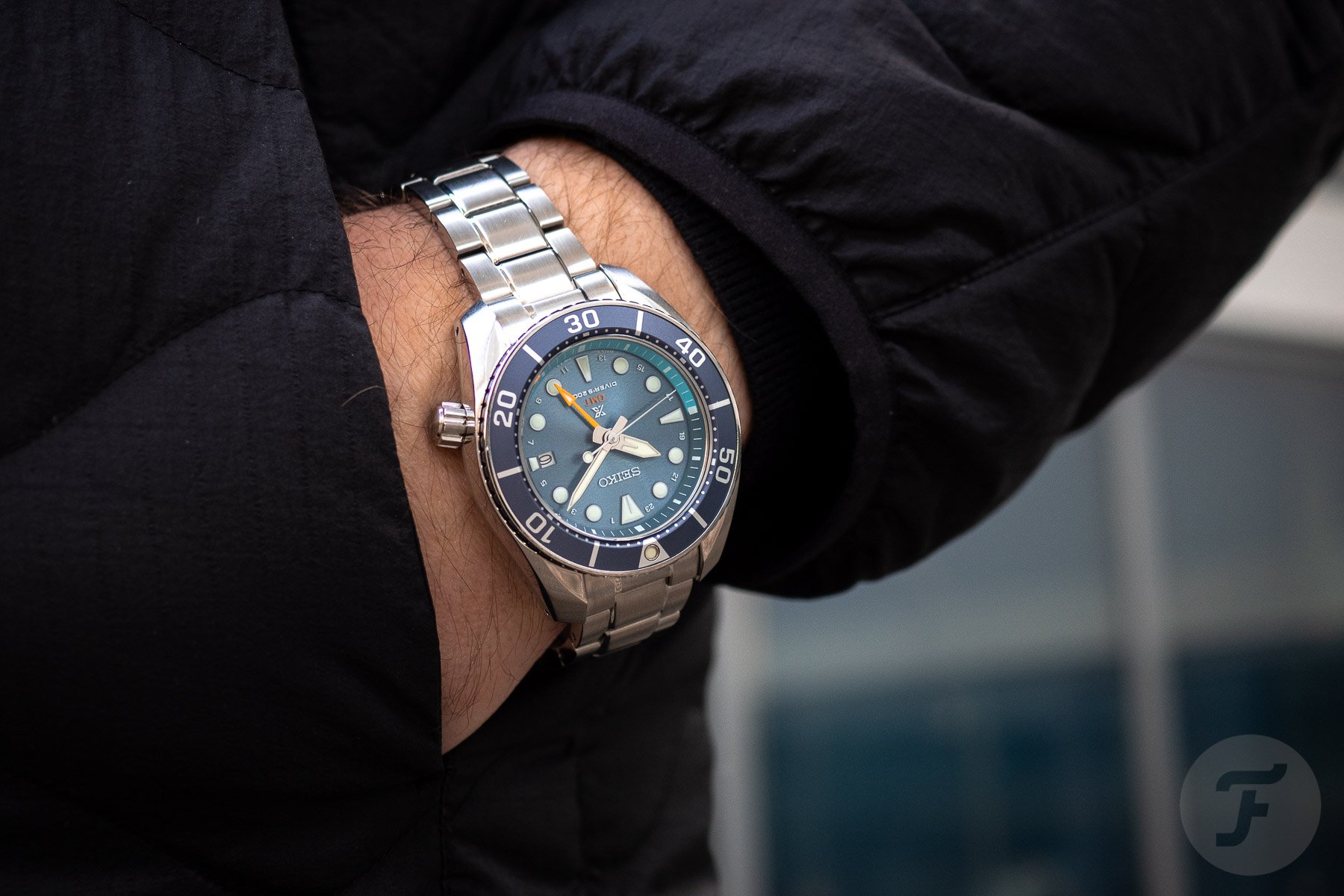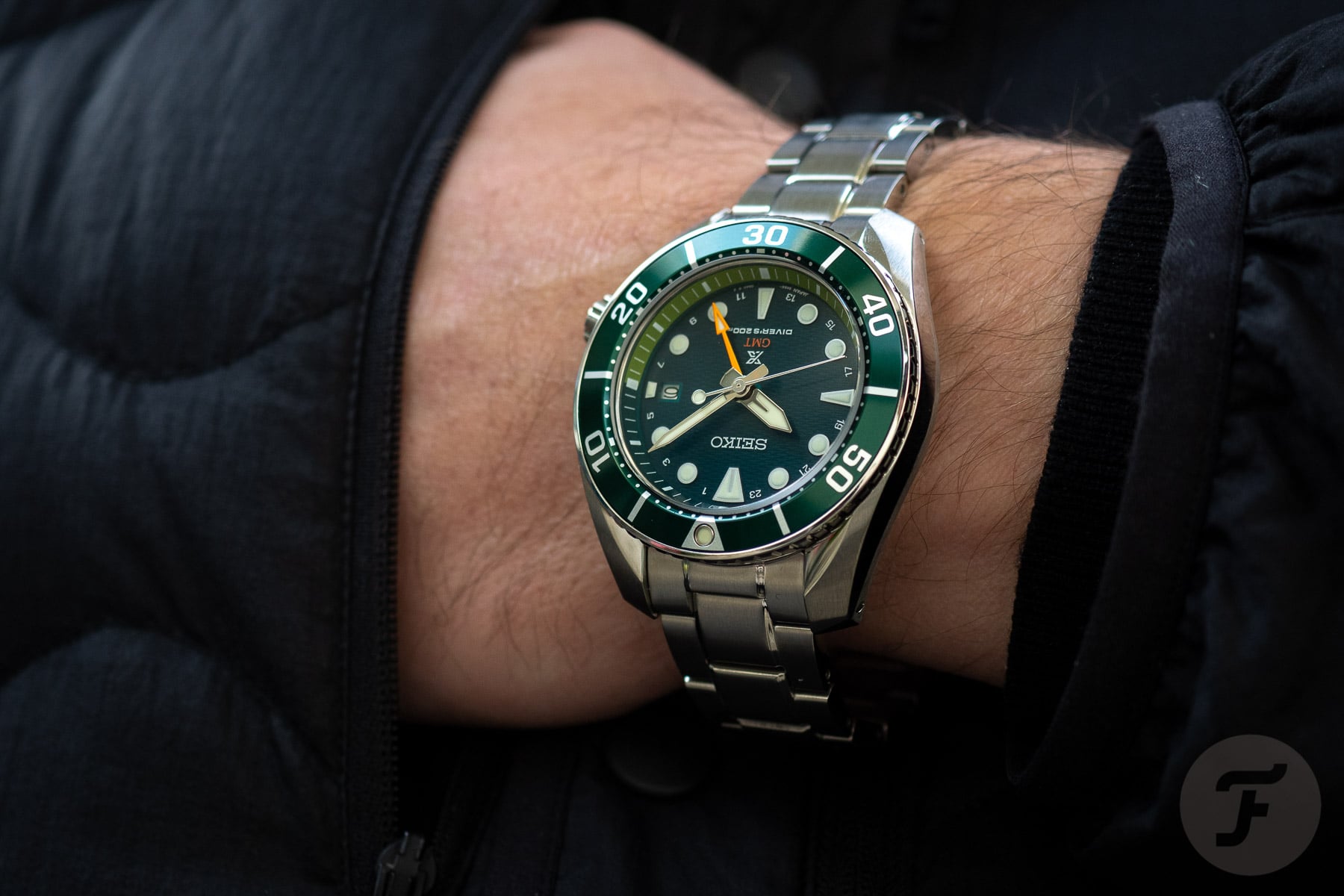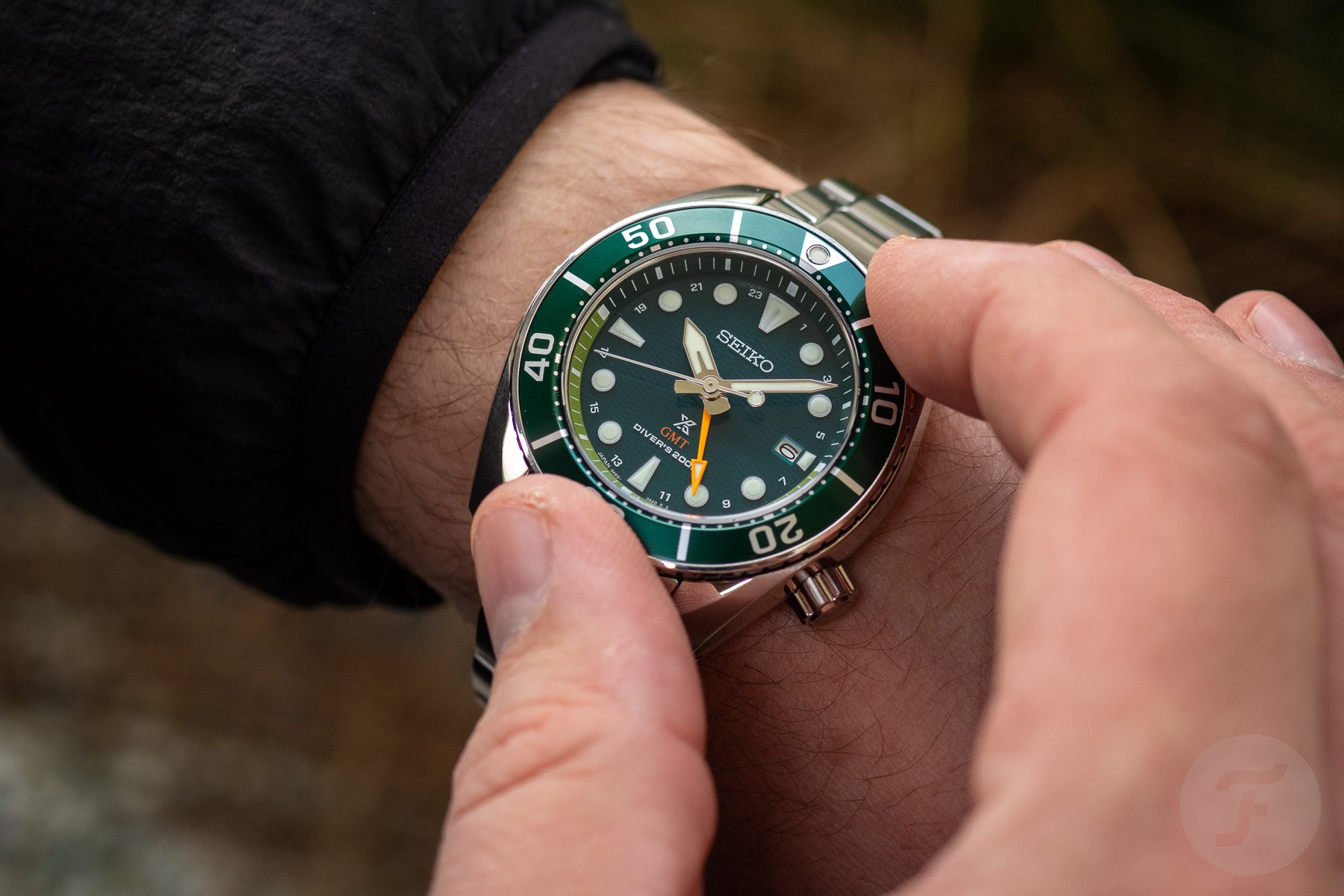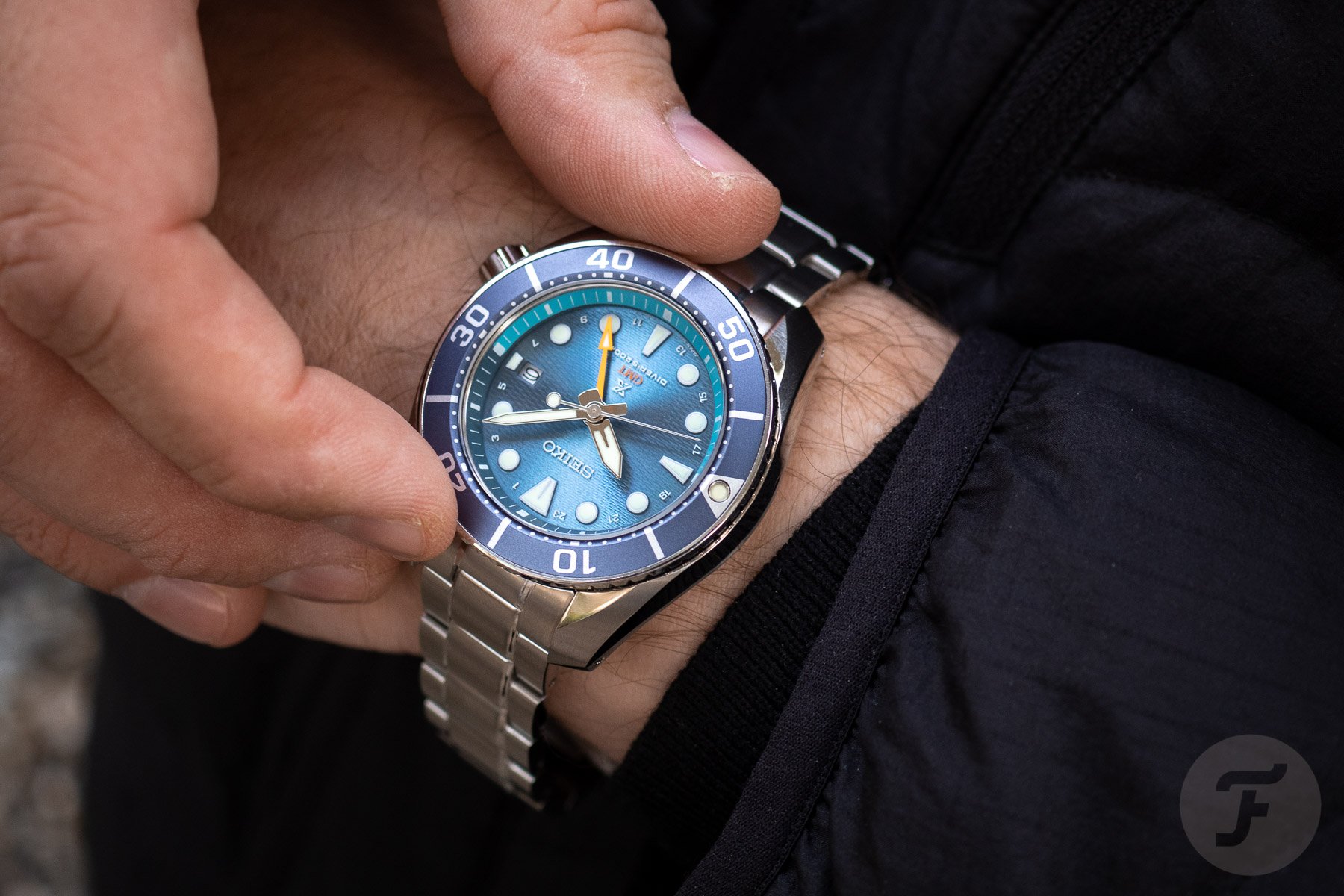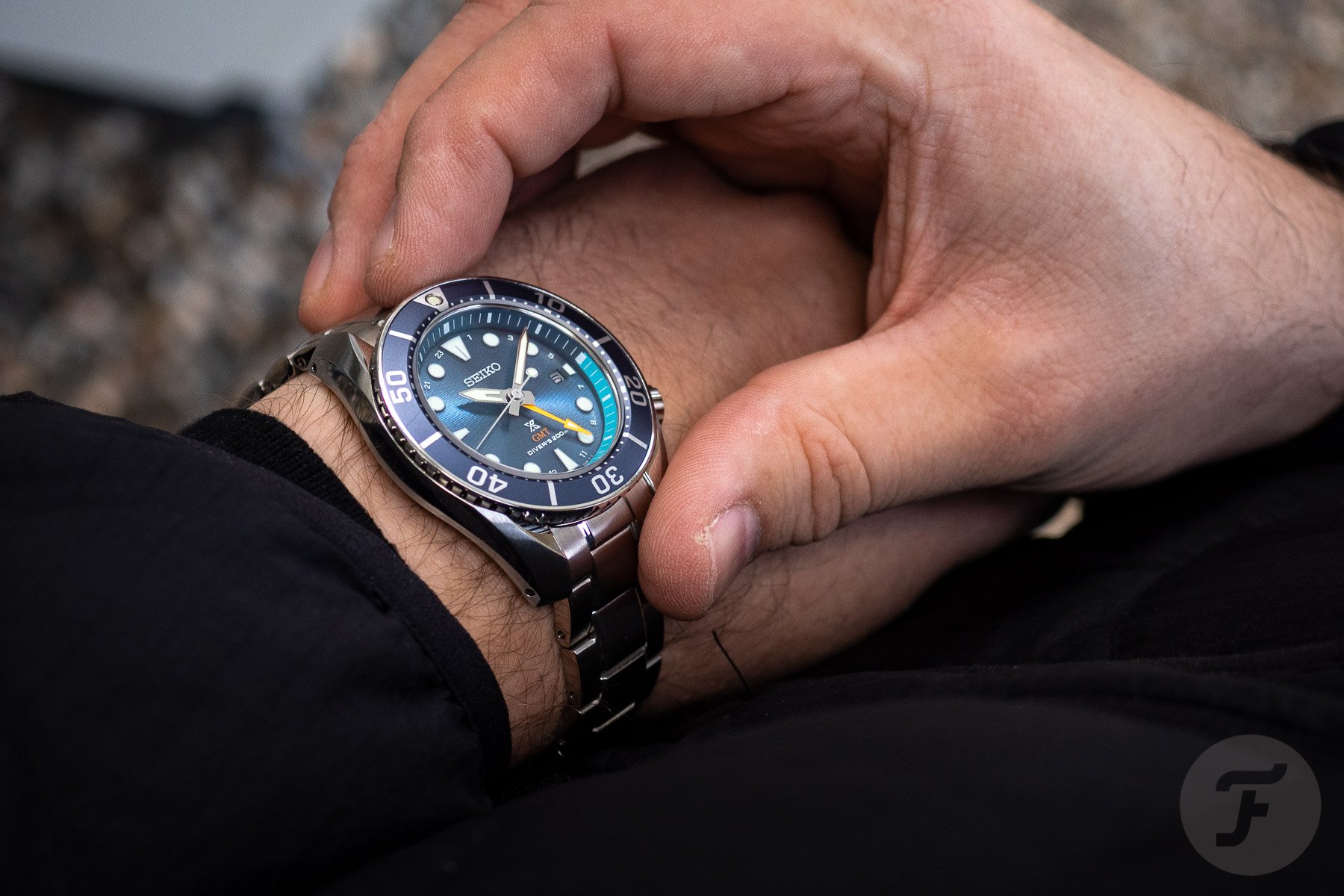Seiko Introduces The New Prospex SFK001J1 And SFK003J1 — Two Solar-Powered Quartz GMT Versions Of Its Famous Sumo Dive Watch
The year is just one month old, and Seiko has already graced us with the first string of new releases these past few weeks. While that is business as usual, Seiko surprised me with its latest release. I own a first-generation Seiko “Sumo” SBDC001 that I love very much. While I don’t wear it as much as I once did, the watch has a special place in my heart. That’s why I was more than intrigued to learn more about the new Seiko Prospex SFK001J1 and SFK003J1. These two surprising new Sumo models add a GMT function to this popular Seiko dive watch. As someone who owns a Sumo and is looking for a great GMT, you will understand that I had to check them out.
When I think of my Seiko Sumo SBDC001, I have nothing but good memories. I have had the watch for years, and it has proved to be a reliable timepiece that is built like a tank and wears comfortably for a 45mm watch. It has withstood a lot of different adventures successfully, and I still love wearing it from time to time. I did struggle to find the right strap for it, but the camo rubber strap from CNS & Watch Bands (formerly Cheapest NATO Straps) that I wrote about a year ago proved to be a great pick for me. It remains on the watch to this day. The rubber strap is comfortable and perfectly balances the bulky 45mm case on the wrist. Additionally, it provides some colorful pizzazz to the overall look that I really enjoy.
The new Seiko Prospex SFK001J1 and SFK003J1
And the same colorful presence attracted me to the new Seiko Prospex SFK001J1 and SFK003J1. These two new Sumo models introduce a GMT functional to the brand’s hardcore dive watch. Needless to say, I wanted to find out more. But in a surprise twist, Seiko also equips these new releases with a solar-powered quartz movement, something I do not associate with the Sumo at all. But we’ll get to that. Overall, the first thing that stood out was both timepieces’ colorful presence. On top of that, we see two new dials that allow light to charge the battery that powers the watches. These dials feature a wavy pattern that resembles the ones used for last year’s SPB321J1 and SPB323J1, which Nacho wrote about here. On top of that, the dials have a translucent layer hinting at the dial’s function as the watch’s solar panel.
While the dial patterns are not identical, they link these two new models more to the three models presented in 2022 than the standard Sumo lineup. The first of the two new models is the Prospex SFK001J1, which comes with a blue dial and bezel. It also features an orange GMT hand and orange “GMT” lettering on the dial. As you can see, the indications for this complication are integrated into the dial design. The first is the 24-hour scale, with shows odd numbers between the regular hour markers. In addition to that, the dial rehaut features the day/night indication, showing the lower daytime portion in a lighter blue color.
A colorful design with some deliberate choices
The green-dialed SFK003J1 follows the same design solution. It features a green dial with the same intricate pattern as the blue version. As you can see, the green aluminum bezel insert is slightly different in color but pairs with the dial nicely. This reference also has the 24-hour indications integrated into the regular hour scale. For the daytime part of the day/night indication, Seiko uses a lighter shade of green. And lastly, you will also find an orange GMT hand and the “GMT” lettering on the dial executed in orange. I love the typical Sumo handset with the orange GMT hand. There is something charming about this ultra-functional combo.
The result is a design that leaves the Sumo’s dive bezel untouched and integrates the GMT functionality differently than we are used to. But with these deliberate design choices, Seiko makes a statement that these two watches are dive watches first and GMTs second. I like that approach as it keeps the overall design fairly clean with a nice injection of color.
A dial that remains fairly straightforward
While I love the utilitarian approach of a regular Sumo, I have to say that this dial pattern adds depth and style to the watch. My favorite of the two is the green one because I love the combination of green and orange. On top of that, the green shades speak more to me. The blue colors, especially on the bezel, look gray from some angles and blue from others. On top of that, it looks much shinier and louder than the green version.
So when it comes to overall charm and presence, the green version has a slight edge in my book, but I perfectly understand that it’s a matter of personal preference. Regardless of which one you prefer, the level of detail on these dials is pretty impressive. The date window is integrated nicely at 3 o’clock. You could debate whether it would have been better to have the date disc in the same color as the dial with white printing. I guess that it’s pretty hard to match the dial color, so a white disc with black printing is the safer option. I don’t mind it, to be honest, as it corresponds nicely with the lume-filled hour markers.
The substantial measurements make them big watches
Now, we haven’t talked about the case details. If you own a regular Sumo or have worn one, you know that it’s a big boy. The case of the regular model is 45mm wide, 52.5mm long, and 13.5mm thick with a small lug spacing of only 20mm. It makes for a big watch that can be tough to balance if you don’t have the proper strap or bracelet. Well, I can tell you that it’s all the same for these new GMT models. The watch also features the same 45mm case, which is slightly thinner thanks to the movement at 13.16mm. The case has a 20mm lug width and is water resistant to 200 meters.
I love seeing the case design again as it features the same characteristic drilled lugs and the slightly recessed bezel. Additionally, the crown is placed at 4 o’clock, as it is on many of Seiko’s divers. Overall, the case has a lot of character, and the mix of polished and brushed parts makes it visually impressive. On top of that, I have always found that the case is very comfortable on the wrist despite its size. And with this new Sumo GMT, that is no different. The one thing that I have to say, though, is that the thickness makes it quite a bulky timepiece.
The bracelet of the Sumo
This begs the question of whether the stainless steel bracelet can balance out the watch on the wrist. Despite the small lug width, I have to say that it can. But many of us know that the bracelets have been a worry for Seiko fans for a long time. I never wear my Sumo on its original bracelet as its quality is debatable, to say the least. It is good to see that Seiko has made significant steps in the past decade when it comes to its bracelets. Unfortunately, while the bracelets of these new models might look slightly better thanks to their more intricate finishing, the quality could be better.
This feeling is mostly the result of many brands in the same price category making significant steps in the quality of their bracelets. And while Oyster-style design looks nice, this bracelet is underwhelming if you consider the overall build quality of these pieces. While I don’t always mind a rattly bracelet, I would have loved to see a bracelet with better construction. Another issue I had with this bracelet was the clasp. There is no finesse in its use and finishing. I would have loved to see Seiko devote a bit more effort to bringing the bracelet’s quality up to par with the rest of the watch.
The Seiko 5K65 GMT movement
As mentioned, Seiko chose to equip these GMT divers with its solar-powered 5K65 quartz movement. The movement is accurate up to ±15 seconds per month, according to Seiko’s specifications, and you will not need to change the battery regularly. I have no doubt that these in-house movements will prove to be very reliable and great for everyday use. Still, the choice of this movement is quite a surprising one, in my opinion. I always associate the Sumo with the brand’s mechanical Prospex models, and seeing it with a solar-powered quartz movement feels strange. And with the many new mechanical GMTs out there, I would love to see a mechanical version of this watch as well.
The 5K65 movement allows you to independently set the 12-hour hand if you pull the crown out to the first position. It makes these two new Sumo models traveler GMTs, and that could be part of the reason that Seiko chose this movement. For the Seiko 5 GMTs that Nacho wrote about, Seiko uses its self-winding 4R34 movement, which is a caller GMT. For a Sumo, we would expect a step up in quality and also in functionality when it comes to mechanical movement. As far as I know, though, the only mechanical traveler GMT movement in the Seiko collection is the 6R64, which has a much busier layout that doesn’t suit this watch. It makes the choice for the solar-powered 5K65 quartz movement easier to understand. But in all honesty, the Swatch Group already offers great mechanical traveler GMTs, such as the Mido Ocean Star GMT and the Certina DS Action GMT for €200–300 more. It has become quite a competitive market for these Sumo GMTs indeed.
Wearing the Seiko Prospex SFK001J1 and SFK003J1
Once I put the green SFK001J1 on my wrist, I was greeted by its familiar overall presence. As I said, I love the Seiko Sumo. It feels instantly familiar despite featuring the updated bezel design compared to my first-generation model and the added GMT complication. At first glance, the integration of the GMT function feels natural and adds a nice sparkle of color. What does immediately stand out is that these are heavy watches. Now, I am a big guy, so I can handle these watches easily, but these GMT divers are not for people with smaller wrists.
Once on the wrist, I quite enjoyed wearing both pieces. The case shape with its curved lugs sits very well on the wrist despite its size. As mentioned, my preference is the green SFK003J because the blue SFK001J is a bit too shiny for my taste. But I have to say I was intrigued by the changing color of that model. Especially when the bezel insert looks gray, it creates a special dynamic with the intricacies of the dial. Nevertheless, the green color is richer and classier, and I prefer that.
My impressions of the Seiko Prospex SFK001J1 and SFK003J1
It’s also no secret that the sweet spot for many watch fans nowadays is closer to 38–42mm rather than 45mm. While I won’t debate that there is a market for these watches, I question whether I would have picked the Sumo as the watch to get the GMT function. Don’t get me wrong; seeing a proper GMT diver is refreshing, and I love the Sumo, so it’s hard not to have a soft spot for the new Prospex SFK001J1 and SFK003J1. They are available starting today for €780, which is €50 less than the regular mechanical Sumo diver.
But the reality is that I would love to see Seiko make a smaller mechanical GMT diver. If not, the brand could at least add another smaller mechanical GMT option with a 24-hour bezel like the Seiko 5 GMTs. If you consider that whole package, that will make more sense despite these new Sumos being objectively better watches. Sure, these new Prospex SFK001J1 and SFK003J1 models have that great Sumo charm, and they do feel sturdy and well built overall. Put them on a sturdy rubber strap, and you will have a great GMT diver… if you are looking for a solar-powered quartz GMT diver, that is. And I question if many people will want that with so many great mechanical GMTs around.
For more information, check the official Seiko website. Let us know your thoughts on these on two Seiko Prospex Sumo GMTs in the comments section.

